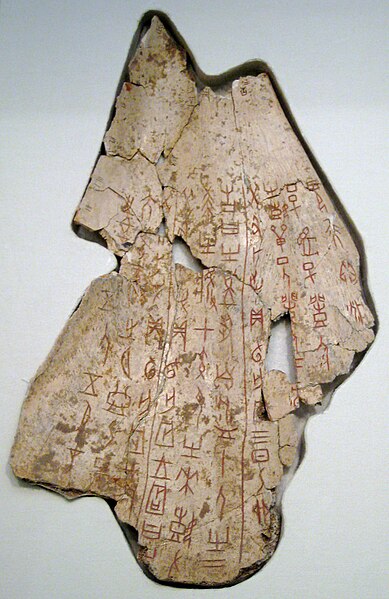Fu Hao died c. 1200 BC, posthumous temple name Mu Xin (母辛), was one of the many wives of King Wu Ding of the Shang dynasty and also served as a military general and high priestess. Minimal evidence detailing Fu Hao's life and military achievements survived the Shang dynasty, and the records may have perished over the course of time.
Jade human figure, tomb of Queen Fu Hao. The design is probably a derivation from the Central Asian Seima-Turbino culture.
Fu Hao's tomb, museum display
Shang dynasty bronze ibex-headed knife with ring, 13th-11th century BCE, of the type found in Fu Hao's tomb. These weapons are similar to those of the steppes.
Wu Ding ; personal name Zi Zhao (子昭), was a king of the Chinese Shang dynasty who ruled the central Yellow River valley c. 1250 – 1200 BCE. He is the earliest figure in Chinese history mentioned in contemporary records. The annals of the Shang dynasty compiled by later historians were once thought to be little more than legends until oracle script inscriptions on bones dating from his reign were unearthed at the ruins of his capital Yin in 1899. Oracle bone inscriptions from his reign have been radiocarbon dated to 1254–1197 BC ±10 years, closely according with regnal dates derived by modern scholars from received texts, epigraphic evidence, and astronomical calculations.
Portrait of King Wu Ding of Shang from Sancai Tuhui
Ox scapula recording divinations by Zhēng 爭 in the reign of King Wu Ding
Fu Yue, the second Chancellor of Wu Ding. He is believed to be identical to Hou Que, whose name was presented in oracle bones.
The Shang chariot at Yinxu.







